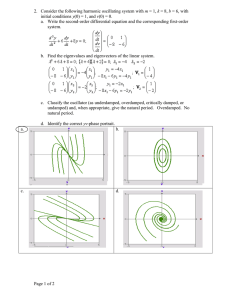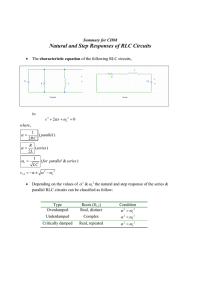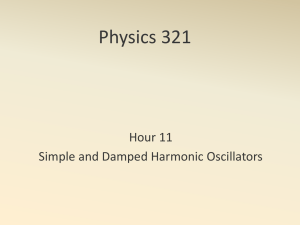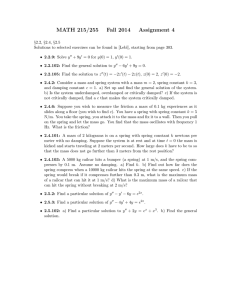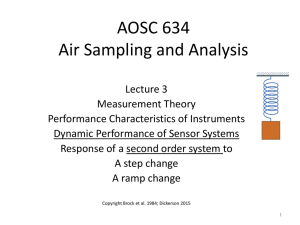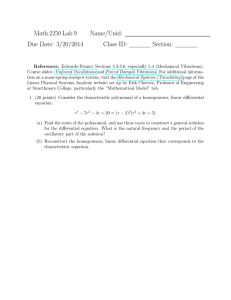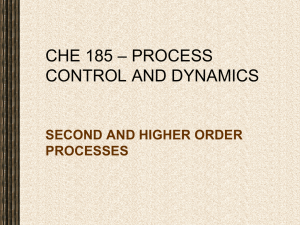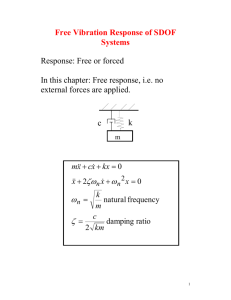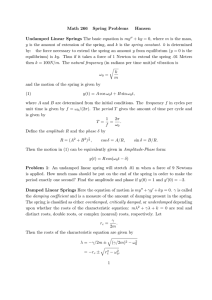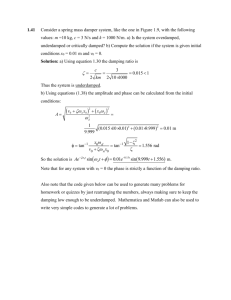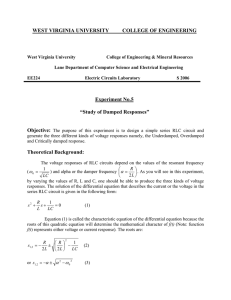Lecture 1 - Digilent Inc.
advertisement
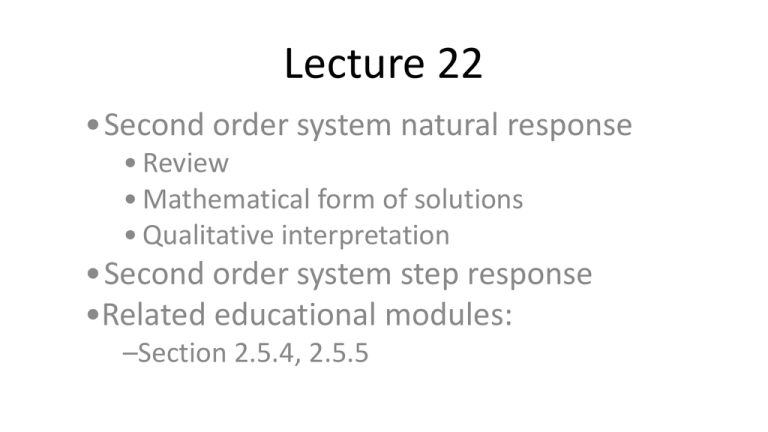
Lecture 22 •Second order system natural response • Review • Mathematical form of solutions • Qualitative interpretation •Second order system step response •Related educational modules: –Section 2.5.4, 2.5.5 Second order input-output equations • Governing equation for a second order unforced system: • Where • is the damping ratio ( 0) • n is the natural frequency (n 0) Homogeneous solution – continued • Solution is of the form: • With two initial conditions: , Damping ratio and natural frequency • System is often classified by its damping ratio, : • > 1 System is overdamped (the response has two time constants, may decay slowly if is large) • = 1 System is critically damped (the response has a single time constant; decays “faster” than any overdamped response) • < 1 System is underdamped (the response oscillates) • Underdamped system responses oscillate Overdamped system natural response • >1: yh ( t ) e n t y 0 2 1 n y0 t n e 2 n 2 1 2 1 y 0 2 1 n y0 2 n 1 2 e n t 2 1 • We are more interested in qualitative behavior than mathematical expression Overdamped system – qualitative response • The response contains two decaying exponentials with different time constants • For high , the response decays very slowly • As increases, the response dies out more rapidly Critically damped system natural response • =1: yh ( t ) e n t y0 y 0 n y0 t • System has only a single time constant • Response dies out more rapidly than any overdamped system Underdamped system natural response • <1: yh ( t ) e n t y 0 n y0 2 sin t 1 n 2 n 1 y0 cos nt 1 2 • Note: solution contains sinusoids with frequency d Underdamped system – qualitative response • The response contains exponentially decaying sinusoids • Decreasing increases the amount of overshoot in the solution Example • For the circuit shown, find: 1. The equation governing vc(t) 2. n, d, and if L=1H, R=200, and C=1F 3. Whether the system is under, over, or critically damped 4. R to make = 1 5. Initial conditions if vc(0-)=1V and iL(0-)=0.01A Part 1: find the equation governing vc(t) Part 2: find n, d, and if L=1H, R=200 and C=1F Part 3: Is the system under-, over-, or critically damped? • In part 2, we found that = 0.2 Part 4: Find R to make the system critically damped Part 5: Initial conditions if vc(0-)=1V and iL(0-)=0.01A Simulated Response
